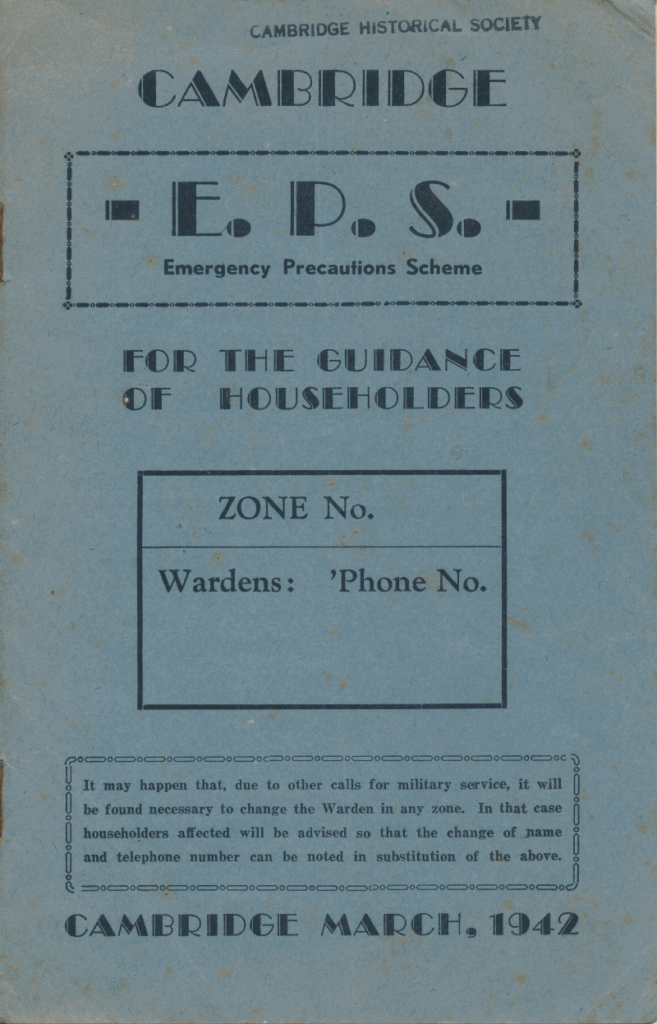
“Don’t Panic”: Wartime Emergency Booklet
-
As fears of Japanese invasion gripped New Zealand in March 1942, every household in Cambridge received a copy of The Emergency Precautions Scheme (EPS) for the Guidance of Householders—a wartime civil defence guide designed to prepare citizens for enemy attack.
- Accession Number: CM762/7
- Noo hea Where: Cambridge
- Ua When: 1942
- Materials: Paper, metal
Although historians now believe the threat of invasion was minimal, the fear at the time was very real. The bombing of Pearl Harbour in December 1941 had pushed the Pacific war closer to home, and New Zealanders were mobilising in response. All men aged 18 to 65 were enrolled in the Emergency Defence Corps, including the Home Guard, popularised decades later in the British comedy Dad’s Army.
The EPS, less widely known, had actually been established in 1935 and was open to women. It aimed to coordinate responses to natural disasters and enemy action and was the predecessor to today’s Civil Defence system.
The booklet not only included practical instructions such as how to build slit trenches, blackout rooms, and pit privies—but also advice on how to deal with incendiary bombs, which it claimed “with ordinary care can be handled by children.” The standout message, however, was a bold and reassuring: “DON’T PANIC.”
Of special historical value are the pages listing local Cambridge residents involved in the EPS, including their assigned roles and designated emergency assembly locations throughout the town.
Cambridge’s wartime importance extended beyond paper plans. That same year, it was selected as the site of a secret aviation fuel depot—coded Aviation Reserve 9 (AR9). The concrete fuel bunker still exists today and can be seen near Lake Te Koo Utu.
Related taonga
Cambridge Sends You Greetings CM 1773/1 – Published in 1940 to raise funds for the war effort, this booklet includes messages from family and friends to their loved ones.
